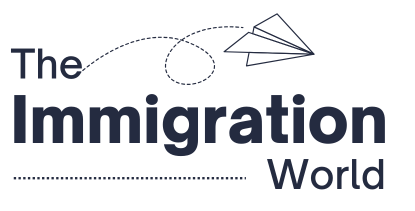For years, Germany has been the academic dreamland for students from every corner of the globe. In 2026, that dream is still alive and well, especially because most public universities in Germany charge no tuition fees at all. You read that right: whether you’re planning to do a Bachelor’s, Master’s, PhD, or even postdoc, your tuition bill at a public university could be €0. The only catch? You’ll still need to cover modest semester fees and living costs. But with scholarships, work rights, and a little planning, you could earn a world-class degree without burning a hole in your wallet.
Key Takeaways
In 2026, Germany remains one of the few countries offering world-class tuition-free education to international students across Bachelor’s, Master’s, and PhD programs. While you’ll still need to cover modest semester fees and living costs, numerous scholarships like DAAD and Deutschlandstipendium can make studying almost cost-free. This guide covers why Germany offers free education, which universities participate in, admission requirements, and a step-by-step application process, so you can secure your spot and start your German academic adventure without breaking the bank.
Why Germany Offers Tuition-Free Education to International Students
Germany’s higher education policy is built on a principle that would make most countries jealous: education should be accessible to everyone regardless of nationality. The idea is simple: by attracting talented students from around the world, Germany invests in its own future workforce and global influence. This approach benefits the country’s economy, research output, and international partnerships.
Also Read: How to Get Germany’s Freelancer Visa in 2025: A Complete Guide
Public universities in Germany are funded primarily by the state. This means they don’t rely heavily on tuition fees to keep the lights on. Instead, they focus on maintaining high academic standards and opening their doors to as many bright minds as possible. It’s no surprise then that international enrollment in Germany has skyrocketed in recent years, making it one of the top five study-abroad destinations worldwide. In short, free tuition isn’t charity, a strategy.
Which Universities in Germany Offer Free Education in 2026
If you’re eyeing a free education in Germany in 2026, the good news is that almost every public university fits the bill. From technical institutions to research-focused universities, the options are vast.
Some of the most renowned tuition-free public universities include:
- Ludwig Maximilian University of Munich (LMU Munich) – Famous for its humanities, sciences, and social sciences programs.
- University of Heidelberg – Germany’s oldest university, particularly strong in medicine and law.
- Technical University of Munich (TUM) – A global leader in engineering, technology, and natural sciences.
- University of Hamburg – Known for its strong research environment across multiple disciplines.
- Humboldt University of Berlin – A hub for cultural studies, arts, and sciences.
Many of these universities also offer English-taught Master’s and PhD programs, which makes life much easier for students who don’t speak fluent German (yet). The key is to check each university’s program catalog for language requirements before applying.
Understanding the Semester Contribution and Other Costs
When we say “free” education, it doesn’t mean you can breeze into Germany without spending a cent. Public universities charge a semester contribution usually between €250 and €350. This covers administrative services, student union activities, and a public transportation pass valid across your city or even state.

Then there’s the matter of living expenses. In 2026, Germany’s estimated cost of living for students hovers around €934 per month (or about €11,208 for the year). This includes accommodation, food, transportation, health insurance, and personal expenses. While Berlin and Munich may be pricier, smaller cities like Leipzig or Saarbrücken can be more affordable.
Think of it this way: the semester contribution is like a budget-friendly subscription fee to one of the best education systems in the world. Effective financial planning lies in managing your living expenses.
Scholarship Opportunities for Extra Financial Support
If you’d rather keep your savings intact, scholarships are your golden ticket. Germany offers a variety of fully and partially funded programs that can cover living expenses, health insurance, and even travel costs. Some of the best options for 2026 include:
- DAAD Scholarships – Covers tuition (if any), monthly stipends, travel allowances, and insurance for international students across multiple disciplines.
- Deutschlandstipendium – Provides €300 per month for high-achieving students, funded jointly by private sponsors and the government.
- Helmut-Schmidt-Programme – Fully funded scholarships for Master’s students in public policy, governance, and development fields.
- University-specific funding – Many institutions, such as the University of Mannheim or TU Munich, offer their own merit-based and need-based grants.
Competition can be stiff, so start applying early and tailor your applications to match each program’s focus and criteria.
Admission Requirements for Studying in Germany
Getting into a German university is not about luck; it’s about meeting the requirements. For undergraduate programs, you’ll need proof of secondary school completion that’s equivalent to Germany’s Abitur. For Master’s and PhD programs, relevant prior degrees and transcripts are essential.
Language is another key factor. Programs taught in German require proof of proficiency through exams like TestDaF or DSH. English-taught programs typically require IELTS or TOEFL scores. Some universities also accept Cambridge English qualifications.
Application deadlines for the 2026 intake usually fall between December 2025 and July 2026, depending on the program. Always confirm the exact dates for your chosen university and scholarship.
How to Apply and Secure Your Place at a German University
Here’s a clear roadmap to make your Germany study dream a reality:
- Research programs – Use the DAAD database and university websites to shortlist tuition-free options.
- Check requirements – Verify academic and language prerequisites.
- Prepare documents – Gather transcripts, language certificates, Statement of Purpose (SOP), and recommendation letters.
- Apply – Many universities use uni-assist to process applications; others accept direct submissions.
- Apply for scholarships – Do this alongside your university applications to save time.
- Secure funding proof – Either through a blocked account (€11,208 for 2026) or scholarship confirmation.
- Apply for your student visa – Submit your acceptance letter, funding proof, and insurance documents.
- Plan your arrival – Once in Germany, remember you can work part-time (120 full days or 240 half days per year).
With strong preparation, you won’t just get in, you’ll thrive in Germany’s academic and cultural environment.
Final Thoughts
Studying in Germany for free in 2026 is more than just a financial win; it’s an opportunity to immerse yourself in a global hub of research, culture, and innovation. With tuition-free universities, a range of scholarships, and manageable living costs, the country offers a rare blend of quality and affordability.
The only real challenge? Planning. From meeting admission requirements to securing funding, the earlier you start, the smoother your journey will be. If you play your cards right, your biggest expense in Germany is deciding which bakery sells the best pretzels.





